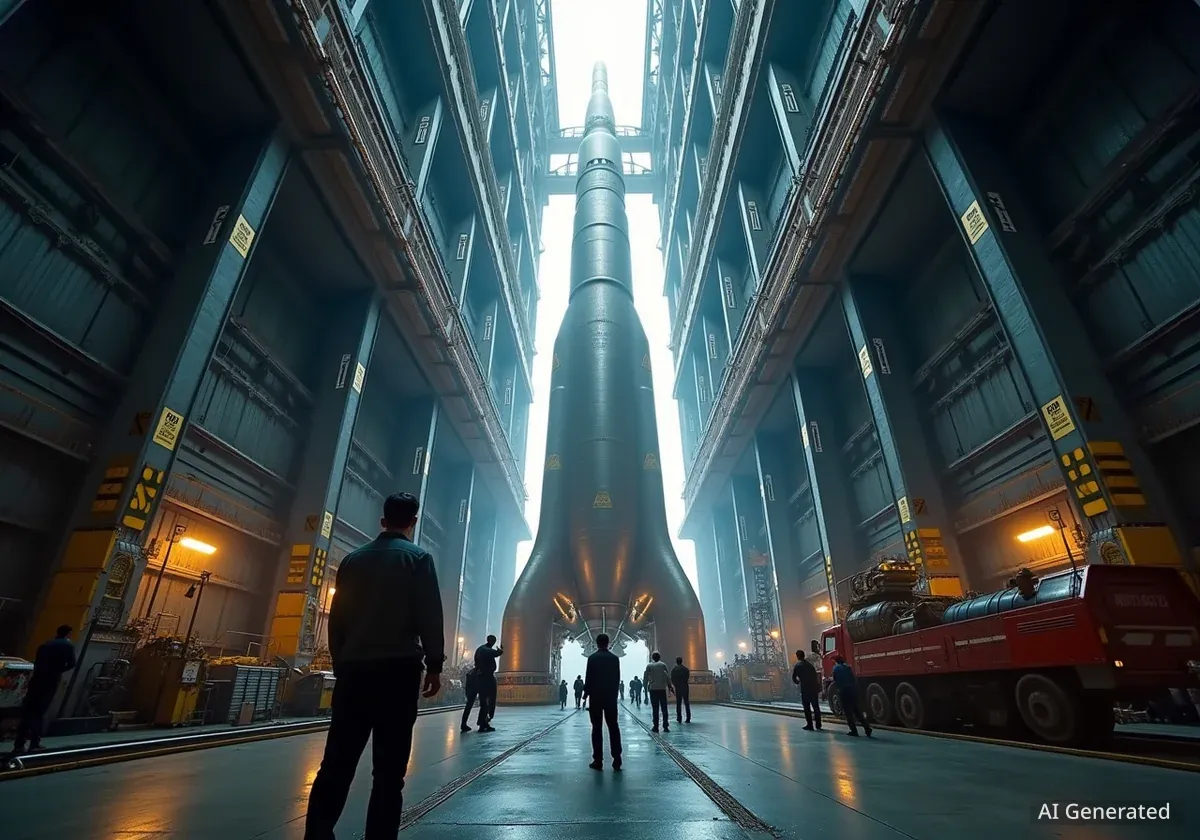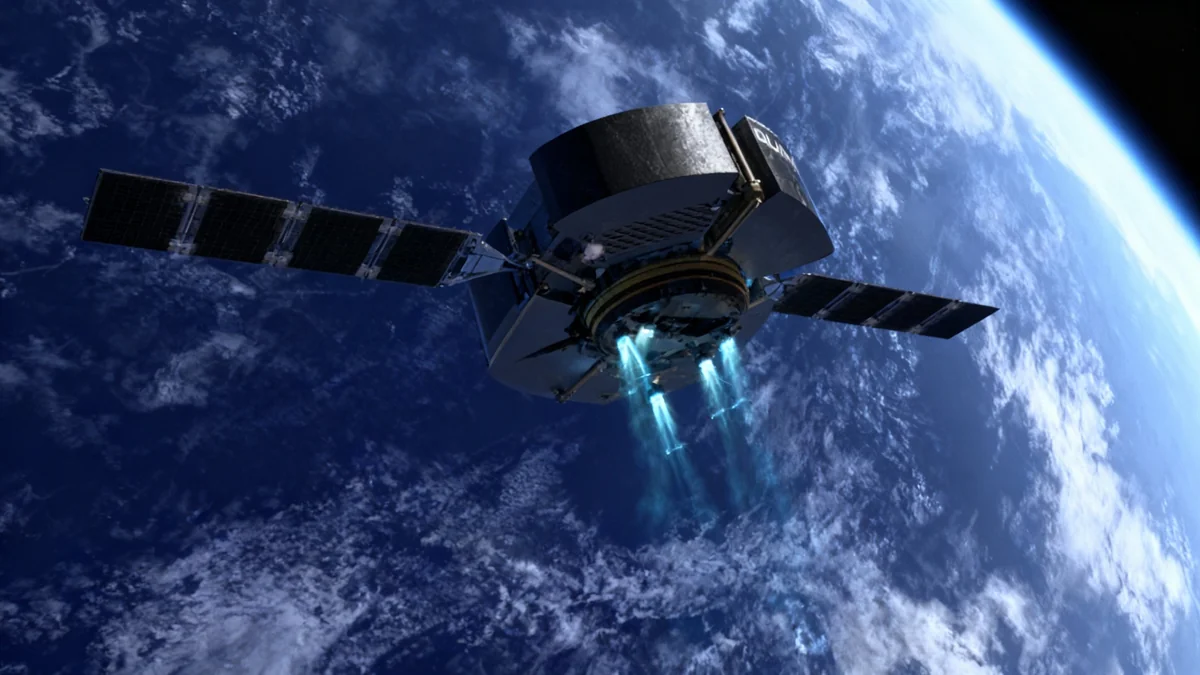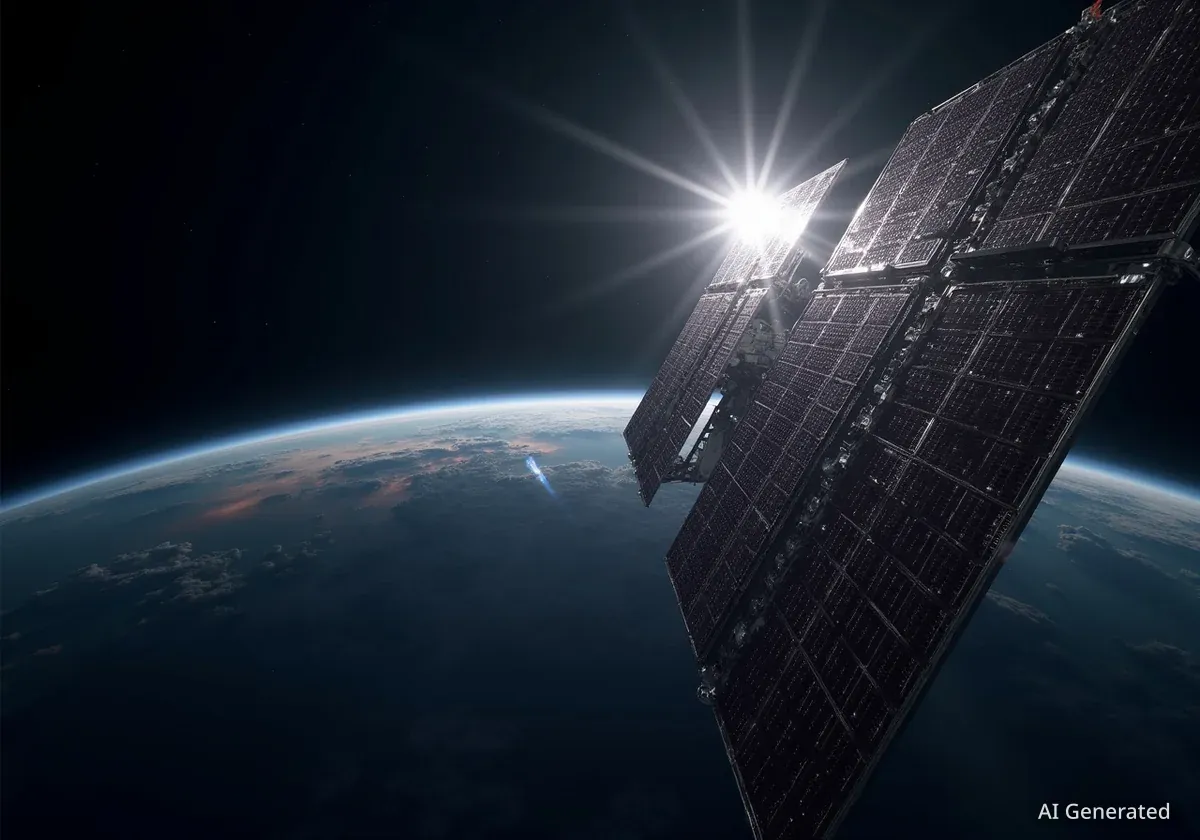Russia's space agency, Roscosmos, has successfully completed a critical ground test of the first stage for its new Soyuz-5 rocket. The test, conducted at a facility in the Moscow Region, confirmed the performance of the powerful RD-171MV engine, moving the next-generation launch vehicle closer to its inaugural flight scheduled for later this year.
The Soyuz-5 is a medium-class rocket designed to replace Russia's aging Proton and Zenit boosters. This successful trial is a significant milestone in the country's plan to modernize its launch capabilities and increase its presence in space.
Key Takeaways
- Roscosmos successfully completed the ground fire test of the Soyuz-5 rocket's first stage.
- The powerful RD-171MV engine operated for the full planned duration of 160 seconds.
- The test paves the way for the first flight of the Soyuz-5, scheduled for December from the Baikonur Cosmodrome.
- Soyuz-5 is designed to carry up to 17 tons to orbit and will replace the Proton and Zenit launch systems.
Details of the Ground Test
The primary objective of the recent trial was to verify the performance and interaction of the Soyuz-5's first stage with its main engine, the RD-171MV. According to a statement from Roscosmos, the test was a complete success.
During the static firing, the engine was ignited and ran for 160 seconds, which is the expected duration of its operation during a real launch. All systems performed within the specified parameters, confirming the design and engineering of the integrated stage.
"The results of the ground trials allow for the commencement of flight and design tests of the Soyuz-5 launch vehicle," Roscosmos announced in a statement following the test.
The agency released a video showing the intense fire trails from the engine, illustrating the immense power generated during the test. This validation is the final major step required before the rocket components are cleared for assembly and pre-flight preparations.
The Powerhouse RD-171MV Engine
At the heart of the Soyuz-5's first stage is the RD-171MV engine, a piece of hardware that Roscosmos designers have nicknamed the "Tsar-engine" due to its exceptional power.
RD-171MV Engine Specifications
- Thrust: 800 tons
- Power Generation: Comparable to a large power plant
- Designation: Considered the most powerful liquid-propellant rocket engine in the world
The engine's performance is critical to the Soyuz-5's mission of lifting heavy payloads into orbit. Its ability to generate such high thrust makes the rocket a versatile platform for a variety of satellite deployment missions. The successful 160-second burn demonstrates its reliability and readiness for operational use.
Strategic Importance of the Soyuz-5
The Soyuz-5 program is a cornerstone of Russia's strategy to maintain a competitive and independent presence in the global launch market. The new rocket is designed as a modern, more efficient replacement for two of its workhorse vehicles from the Soviet era.
Replacing Legacy Systems
The Soyuz-5 is set to take over the roles previously filled by:
- The Proton Rocket: A heavy-lift launcher that has been in service for decades but uses toxic hypergolic propellants.
- The Zenit Rocket: A Ukrainian-designed rocket whose supply chain was disrupted by political tensions.
By developing the Soyuz-5, Russia aims to create a reliable, domestically produced launch vehicle capable of carrying payloads of up to 17 metric tons into low Earth orbit. This capability positions it to compete for commercial satellite launch contracts.
The Baiterek Project
The Soyuz-5 is a central component of the Baiterek project, a joint space venture between Russia and Kazakhstan. The program involves modernizing launch infrastructure at the Baikonur Cosmodrome specifically for the Soyuz-5. The primary goal is to launch unmanned spacecraft, including commercial and government satellites, into various near-Earth orbits.
Timeline and Future Plans
With the successful ground test concluded, the Soyuz-5 program is moving forward on a clear schedule. The first test launch is planned for December 2025 from the Baikonur Cosmodrome in Kazakhstan.
Following a series of flight tests, Roscosmos anticipates that the Soyuz-5 will enter full-scale operational use starting in 2028. This timeline aligns with the broader goals of Russia's national space program.
Last month, Roscosmos chief Dmitry Bakanov outlined an ambitious vision for the next decade. The plan includes the construction and launch of approximately 1,000 spacecraft and 300 carrier rockets. This strategy aims to double the country's current launch cadence, reaching up to 30 launches per year. The Soyuz-5 is expected to be a key vehicle in achieving this target.





